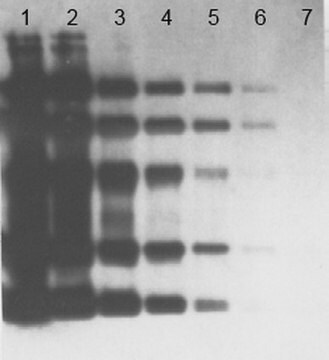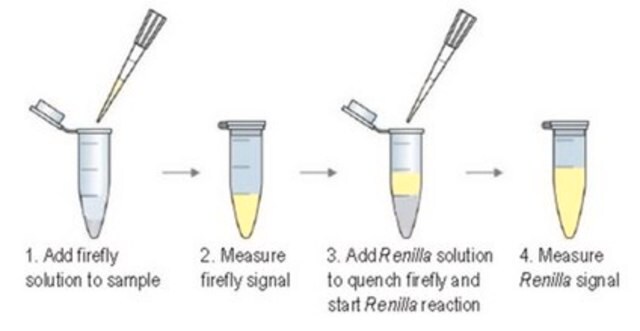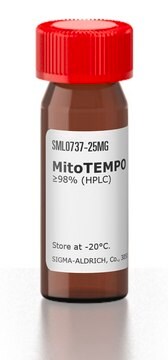추천 제품
생물학적 소스
human
Quality Level
분자량
calculated mol wt 280.63 kDa
포장
vial of 1 mg
제조업체/상표
Millipore
성장 모드
N/A
기술
cell based assay: suitable
flow cytometry: suitable
immunofluorescence: suitable
검출 방법
fluorometric
배송 상태
dry ice
저장 온도
−20°C
일반 설명
Nephrotoxicity, or drug-induced kidney injury, is a critical consideration when developing new therapeutics. Screening methods currently used to detect and/or assess nephrotoxicity or other cytotoxicity secondary to candidate compounds may not have the molecular specificity to inform results of screening, as traditional toxicity screens are often limited to simple cell viability, morphology, and mitochondrial function readouts. Common screening assays may furthermore lack sensitivity, detecting only severe nephrotoxicity induced by high doses of or long exposures to tested compounds. Mild toxicity in a cell model may present very differently in vivo, necessitating kidney toxicity assays that are sensitive and specific enough to ensure therapeutic safety.One approach to enhancing the utility of toxicity screening assays is to measure oxidative stress, which is often more sensitive to mild drug injury. While certain indicators of oxidative stress such as increases in reactive oxygen species (ROS) or depletion of reductants are transient, one durable change to kidney (and other) cells is the post-injury carbonylation of cellular biomolecules. 4-trifluoromethyl-7-hydrazinyl-2H-chromen-2-one (TFCH) is intended to enhance sensitivity to cell injury induced by nephrotoxic or cytotoxic substances in renal system applications including in vivo and in vitro models such as Madin-Darby Canine Kidney (MDCK) cells.Spectral Properties Fluorescence images were obtained by λex = 405 nm and emission at 550 to 650 nm.ReferenceMukherjee, et al. "A Novel Fluorogenic Assay for the Detection of Nephrotoxin-induced Oxidative Stress in Live Cells and Renal Tissue." ACS Sensors 6 (2021): 2523-2528.
애플리케이션
Purity: > 98% confirmed by HPLC. Identification confirmed by HNMR, LC-MS and elemental analysis.
특징 및 장점
Fluorescent live cell probe for visualizing oxidative stress, cytotoxicity, nephrotoxicity from candidate compounds and other substances.
물리적 형태
Lyophilized. Yellow solid.
저장 및 안정성
Store at -20°C, desiccated and protected from light.Note: Centrifuge vial briefly to collect contents at bottom of vial before opening
기타 정보
Live cell fluorescent imaging
법적 정보
BioTracker is a trademark of Merck KGaA, Darmstadt, Germany
면책조항
Unless otherwise stated in our catalog or other company documentation accompanying the product(s), our products are intended for research use only and are not to be used for any other purpose, which includes but is not limited to, unauthorized commercial uses, in vitro diagnostic uses, ex vivo or in vivo therapeutic uses or any type of consumption or application to humans or animals.
신호어
Warning
유해 및 위험 성명서
Hazard Classifications
Eye Irrit. 2 - Skin Irrit. 2 - STOT SE 3
표적 기관
Respiratory system
Storage Class Code
11 - Combustible Solids
WGK
WGK 3
시험 성적서(COA)
제품의 로트/배치 번호를 입력하여 시험 성적서(COA)을 검색하십시오. 로트 및 배치 번호는 제품 라벨에 있는 ‘로트’ 또는 ‘배치’라는 용어 뒤에서 찾을 수 있습니다.
자사의 과학자팀은 생명 과학, 재료 과학, 화학 합성, 크로마토그래피, 분석 및 기타 많은 영역을 포함한 모든 과학 분야에 경험이 있습니다..
고객지원팀으로 연락바랍니다.






